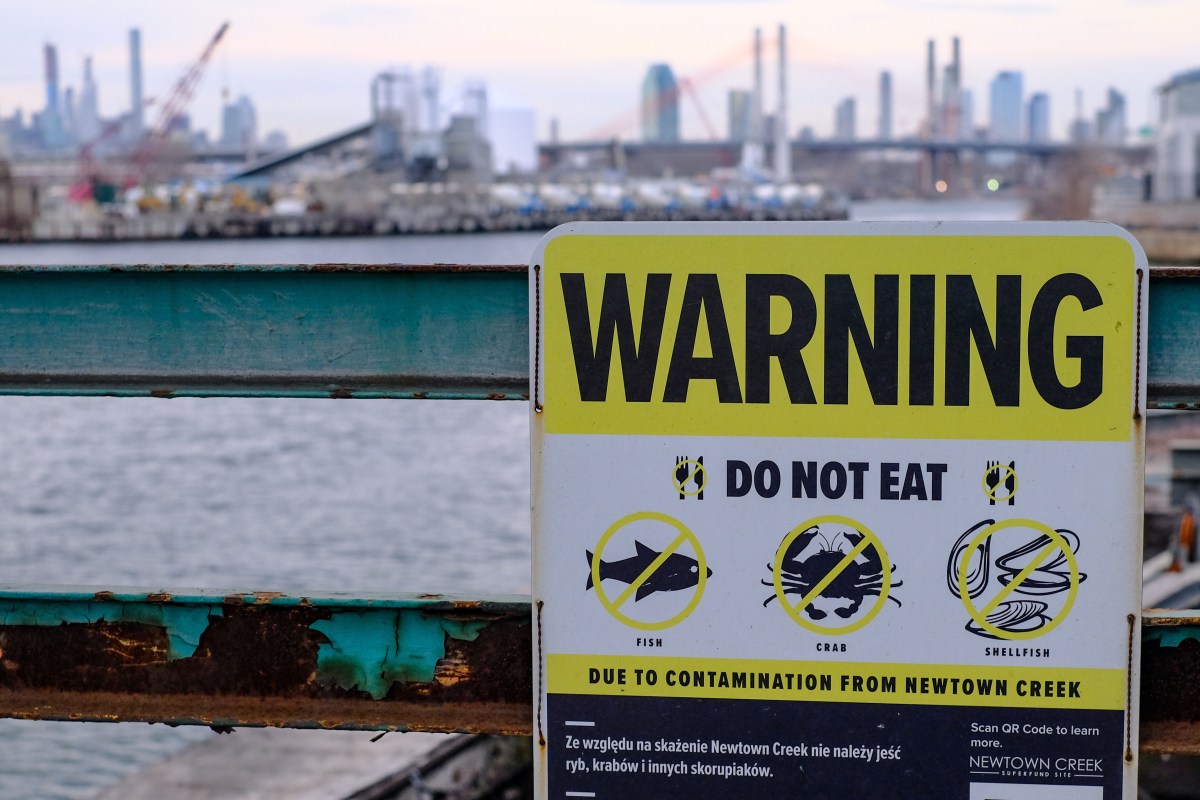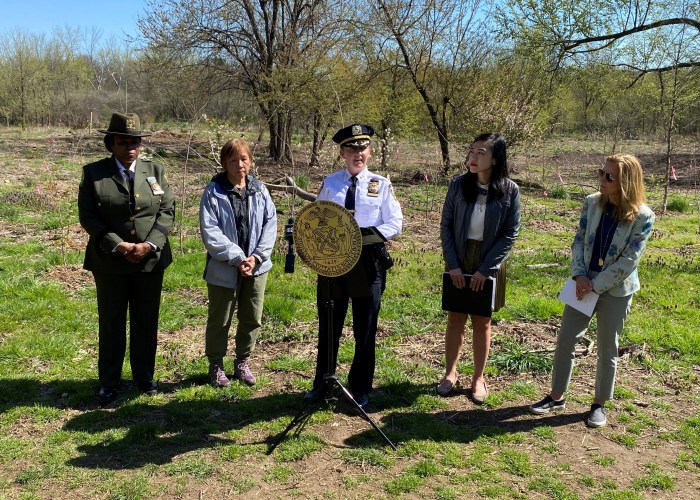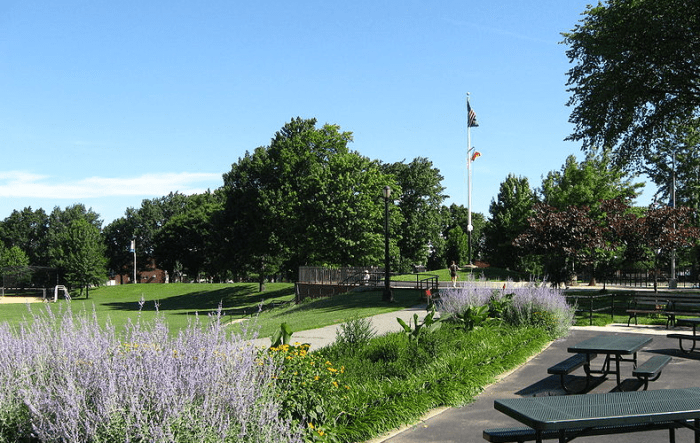Newtown Creek, the tidal estuary of the East River that forms the border between much of Queens and Brooklyn, is also one of the nation’s most polluted waterways.
It was declared a Superfund Site in 2010 and for the last four years, the U.S Environmental Protection Agency has taken thousands of samples of pollution from the creek. The agency said Thursday it’s eyeing the next step in the cleanup process.
The EPA is issuing a proposed plan that evaluates the impacts of the current and expected future volume of combine sewer overflows (CSOs). Every time it rains, hundreds of millions of gallons of contaminated water flowing through the local sewer system pours into the creek.
That largely organic pollution is on top of nearly 200 years of filth accumulated in the waterway. Since the mid-1800s, the area along 11 miles of banks alongside the creek was one of the busiest hubs of industrial activity in New York City with more than 50 oil refineries, petrochemical plants, fertilizer and glue factories, saw mills, and lumber and coal yards all dumping waste into the creek.
It’s also adjacent to the site of one of the largest underground oil slicks in America, below the streets of Greenpoint, Brooklyn. It was discovered in 1978 when a Coast Guard helicopter spotted oil flowing into the creek out of a bulkhead.
The Newtown Creek’s fetid legacy prompted the Superfund declaration nearly a decade ago. Now, the EPA is conducting in-depth investigations of the extent of the contamination at the entire Newtown Creek Superfund Site in order to determine how best to clean it up over the long-term.
“This proposed plan is an important step forward in advancing the cleanup of the Newtown Creek Superfund Site,” EPA Regional Administrator Pete Lopez said. “In this plan, EPA acknowledges that the work that the city is already obliged to do to improve the water quality of Newtown Creek, including major water infrastructure improvements through compliance with the state imposed long term CSO control plan, will be consistent with meeting the needs of the Superfund program and help EPA fulfill its mission of protecting human health and environment.”
The CSO Long-Term Control Plan (LTCP), which was approved by the state in June 2018, includes a number of components to reduce future CSO discharges into the creek, including construction of a storage tunnel. The LTCP is ultimately anticipated to reduce the volume of CSO discharges to Newtown Creek by approximately 61 percent, and to achieve water-body specific water quality standards under the Clean Water Act.
While environmentalists across the country view the EPA under the Trump administration with a jaundiced eye, Willis Eakins — program manager of the Newtown Creek Alliance, which is dedicated to the restoration of life to the waterway — is looking forward to learning more about the plan from the agency.
“Nothing has changed as to the EPA personnel at Newtown Creek under the Trump administration, at least we haven’t noticed any changes,” Eakins said. “That’s why I’m so interested in the public meetings the EPA is holding next month.”
The first public meeting will be held on the Queens side of Newtown Creek on Dec. 9 at Sunnyside Community Services — located at 43-31 39th St. — beginning at 6:30 p.m. On Dec. 11, a second public meeting will be held on the Brooklyn side at PS 110 — located at 124 Monitor St. in Greenpoint — beginning at 6:30 p.m.
The EPA will determine in the future whether additional control actions, either in the creek or at CSO points-of-discharge, are needed to address the cleanup at the full site. These additional control actions could include the placement of sediment traps and/or oil sorbent pads at the end of CSO discharge pipes and in-creek maintenance dredging to address potential accumulation of contaminated solids near the discharges

































